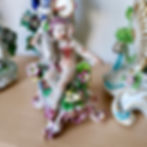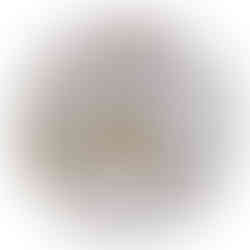Our little winged friends
- willa
- Mar 6, 2020
- 3 min read
Putti, also called cherubs or cupids or little angels, are a very popular Western design feature and you can often see putti in the porcelain items I show. This week I have this wonderful Chelsea-Derby plate from about 1775 decorated by Richard Askew, a famous painter of putti on porcelain. But where did putti come from?

The word "putti" is plural for the Italian "putto", which means a toddler-type winged angel, or a sweet little boy. It is actually a very old word, going back centuries to Persian and Sanskrit. In many current languages the word "son" is still similar: "beta" in Hindi, "putara" in Punjabi and "pesar" in modern Persian. Putti can come with our without wings.
In ancient times putti were depicted to celebrate the lives of deceased children and give them some play and merriment in the hereafter. The Greeks of course had the god Eros (Cupid for the Romans), who was the mischievous little companion of beautiful Aphrodite shooting arrows into people's hearts to make them fall in love - and causing lots of trouble and heartbreak. The Romans loved using putti as decorations, either sculpted, in frescoes or in mosaics.

As Christianity took hold and stamped out all the old pagan ways, Putti disappeared from Western fine and decorative arts for a long time. But in the 15th Century they were rediscovered by the Renaissance artists of Florence, who of course lived amidst the ancient Roman art and suddenly took an interest again. In line with the belief system of the time they gave putti a Christian meaning, symbolising God's omnipresence.
In the 17th Century Baroque style, putti started to take an ever bigger role; Baroque was all about a lavish depiction of God's perfection, and lots of well-fed naked little children ticked both boxes: lavish excess as well as deep religiosity. When Baroque gave way to the more capricious and playful Rococo art of the 18th Century, putti kept having a great time, frolicking around, doing mischief and being incredibly adorable. The rediscovery of Greek and Roman classics in the late 18th and early 19th Century only helped the position of putti in Western fine and decorative art.
So when Richard Askew painted this plate in about 1775, he built on a long tradition. Askew's putti can be easily recognised because they were always quite chubby and had these big cheeks - did he perhaps have chubby children himself who modelled for him? In the case of this plate, the little boy seems busy talking to a couple of doves, I am not sure what about - perhaps discussing World Peace? The plate comes from a service where every piece has one or several putti busy doing something different. Needless to say - this plate is really rare!
There is something else interesting about this plate. Do you remember I wrote about the French "oeil de perdrix" pattern that Coalport used for that outrageously pink plate, a couple of weeks ago? Well, Chelsea/Derby had their very own form: while from a distance the ground pattern on the rim looks like oeil de perdrix, it actually consists of very English little roses, perfectly fitting with the sweet putto.
You can find the plate here in my shop, and you can see the Bow putto here. And if you always want to see the latest additions, follow me on Instagram... I post pictures and a story every single day 🌺🍃🌸
Enjoy your weekend!
This week's new treasures:
#gentlerattleofchina #antiqueporcelain #finebonechina #finechina #antiqueshop #englishantiques #antiquing #antique_r_us #decorativeantiques #dinnerplate #dinnertime #dinnerforone #interiordesign #interiordesigner #johnrose #dessert #desserttable #tablesetting #chelseaporcelain #derbyporcelain #chelseaderby #putti #angels #cherubs #renaissance #richardaskew


































































